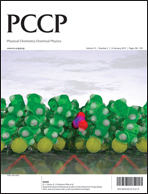Nanoporous silicon networks as anodes for lithium ion batteries
Abstract
Nanoporous silicon (Si) networks with controllable porosity and thickness are fabricated by a simple and scalable electrochemical process, and then released from Si wafers and transferred to flexible and conductive substrates. These nanoporous Si networks serve as high performance Li-ion battery electrodes, with an initial discharge capacity of 2570 mA h g−1, above 1000 mA h g−1 after 200 cycles without any electrolyte additives.


 Please wait while we load your content...
Please wait while we load your content...